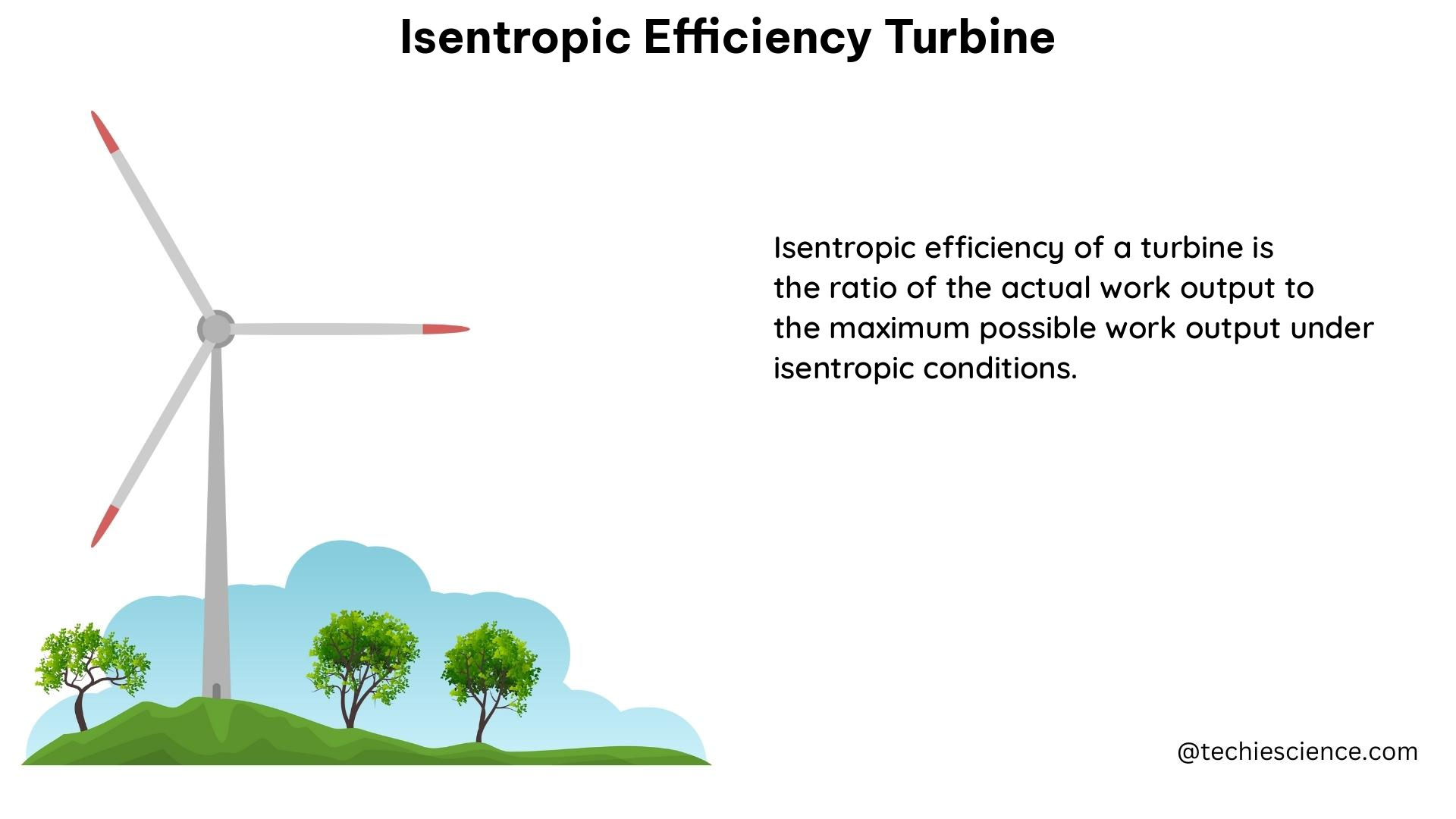Isentropic efficiency turbine is a crucial concept in thermodynamics, representing the efficiency of a turbine when compared to an ideal or isentropic turbine. It provides a measure of how closely the actual turbine approximates the ideal turbine’s performance, playing a significant role in improving the performance of practical systems, optimizing energy production, and reducing energy wastage.
Understanding Isentropic Efficiency
Isentropic efficiency is calculated as the ratio of actual work to ideal work, often expressed as the formula (H1 – H2) / (H1 – H2s), where:
- H1 is the enthalpy at the inlet
- H2 is the enthalpy at the outlet
- H2s is the isentropic enthalpy at the outlet
This formula allows us to quantify the efficiency of a turbine by comparing its actual performance to the theoretical maximum efficiency of an isentropic turbine.
Factors Affecting Isentropic Efficiency
Several factors can influence the isentropic efficiency of a turbine, including:
-
Blade Design: The shape and geometry of the turbine blades can significantly impact the efficiency. Optimizing blade design can minimize losses due to friction, flow separation, and other aerodynamic effects.
-
Rotational Speed: The rotational speed of the turbine rotor affects the flow patterns and pressure distributions, which can influence the isentropic efficiency. Careful selection of the optimal rotational speed is crucial.
-
Inlet Conditions: The temperature, pressure, and flow rate at the turbine inlet can impact the isentropic efficiency. Maintaining optimal inlet conditions is essential for maximizing performance.
-
Exhaust Conditions: The pressure and temperature at the turbine exhaust can also affect the isentropic efficiency. Ensuring proper exhaust conditions can help minimize losses and improve overall efficiency.
-
Leakage and Clearances: Minimizing leakage and maintaining appropriate clearances between the turbine rotor and stator can help reduce losses and improve isentropic efficiency.
-
Moisture Content: In the case of steam turbines, the presence of moisture in the exhaust can lead to erosion and reduced efficiency. Maintaining dry steam conditions is crucial.
Practical Examples
Let’s consider a practical example to illustrate the concept of isentropic efficiency turbine:
In an adiabatic turbine that expands steam from 4 MPa and 400°C to 125 kPa, with the steam exhausted as a saturated vapor, the isentropic efficiency is approximately 73.2%. This figure is determined by calculating the enthalpy values at each stage and substituting them into the efficiency formula.
Another example is a gas turbine used in a power plant. Assuming the inlet temperature is 1,400°C and the outlet temperature is 600°C, with a pressure ratio of 15:1, the isentropic efficiency of the turbine can be around 88-92%. This high efficiency is achieved through careful design and optimization of the turbine components.
Isentropic Efficiency in Other Thermodynamic Devices

Isentropic efficiency is not only applicable to turbines but also to other thermodynamic devices, such as compressors and nozzles.
Compressors
In the case of compressors, isentropic efficiency represents the efficiency of the compressor when compared to an ideal or isentropic compressor. It is calculated using a similar formula to the one used for turbines, but with the enthalpy values reversed.
Nozzles
For nozzles, isentropic efficiency represents the efficiency of the nozzle when compared to an ideal or isentropic nozzle. It provides a measure of how closely the actual nozzle approximates the ideal nozzle’s performance.
Importance of Isentropic Efficiency
Isentropic efficiency is a critical parameter in various engineering fields, including:
-
Power Generation: In power plants, the isentropic efficiency of turbines directly impacts the overall efficiency and output of the power generation system. Improving turbine efficiency can lead to significant energy savings and reduced emissions.
-
Aerospace Engineering: In aircraft and spacecraft design, the isentropic efficiency of turbines and nozzles is crucial for optimizing engine performance, reducing fuel consumption, and improving overall aerodynamic efficiency.
-
Refrigeration and HVAC: Isentropic efficiency is essential in the design and operation of compressors used in refrigeration and air conditioning systems, as it directly affects the system’s energy efficiency and performance.
-
Process Industries: In industries such as oil and gas, chemical processing, and manufacturing, isentropic efficiency is a key factor in the design and optimization of various process equipment, including turbines, compressors, and nozzles.
By understanding and optimizing the isentropic efficiency of these thermodynamic devices, engineers can improve the performance, energy efficiency, and sustainability of a wide range of practical systems.
Conclusion
Isentropic efficiency turbine is a fundamental concept in thermodynamics that provides a measure of the efficiency of a turbine compared to an ideal or isentropic turbine. By understanding the factors that influence isentropic efficiency and applying this knowledge to the design and optimization of turbines and other thermodynamic devices, engineers can significantly improve the performance, energy efficiency, and sustainability of a wide range of practical systems.
References
- Vaia. (n.d.). Isentropic Efficiency: Nozzle, Equation & Applications. Retrieved from https://www.vaia.com/en-us/explanations/engineering/engineering-thermodynamics/isentropic-efficiency/
- YouTube. (2023, March 2). Calculating Isentropic Efficiency of a Turbine in 2 Minutes!. Retrieved from https://www.youtube.com/watch?v=EqOS9aFl3Ao
- StudySmarter. (n.d.). Isentropic Efficiency: Nozzle, Equation & Applications. Retrieved from https://www.studysmarter.co.uk/explanations/engineering/engineering-thermodynamics/isentropic-efficiency/
- Cengel, Y. A., & Boles, M. A. (2015). Thermodynamics: An Engineering Approach (8th ed.). McGraw-Hill Education.
- Saravanamuttoo, H. I., Rogers, G. F., Cohen, H., & Straznicky, P. V. (2009). Gas Turbine Theory (6th ed.). Pearson.
- Moran, M. J., Shapiro, H. N., Boettner, D. D., & Bailey, M. B. (2014). Fundamentals of Engineering Thermodynamics (8th ed.). Wiley.

The lambdageeks.com Core SME Team is a group of experienced subject matter experts from diverse scientific and technical fields including Physics, Chemistry, Technology,Electronics & Electrical Engineering, Automotive, Mechanical Engineering. Our team collaborates to create high-quality, well-researched articles on a wide range of science and technology topics for the lambdageeks.com website.
All Our Senior SME are having more than 7 Years of experience in the respective fields . They are either Working Industry Professionals or assocaited With different Universities. Refer Our Authors Page to get to know About our Core SMEs.